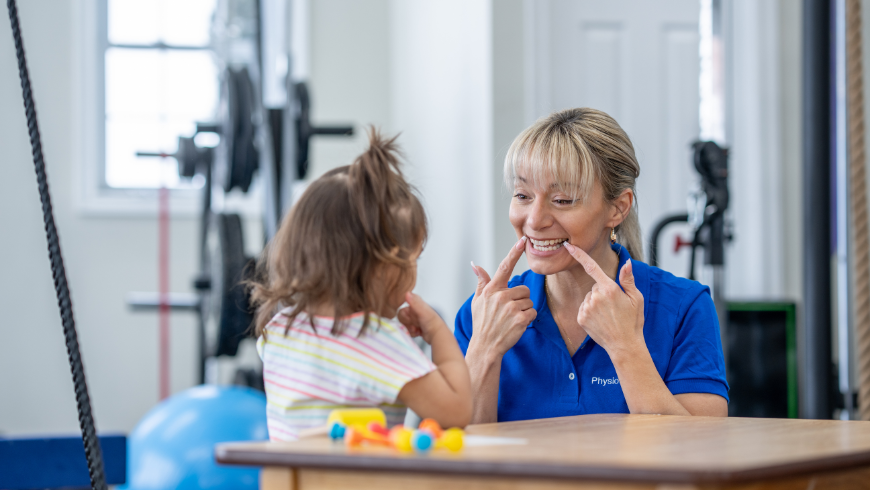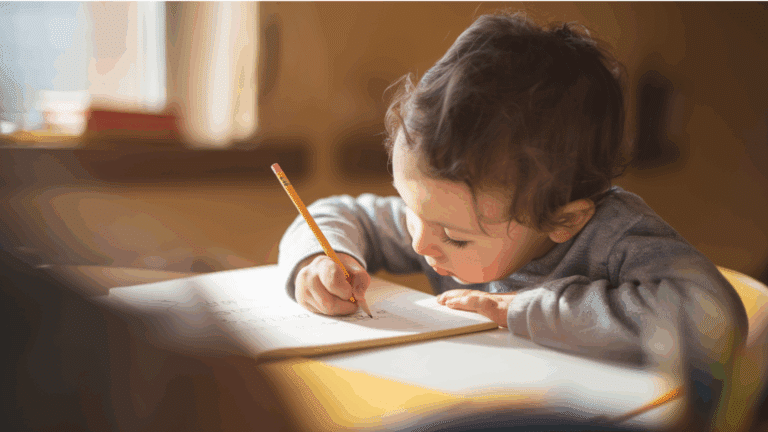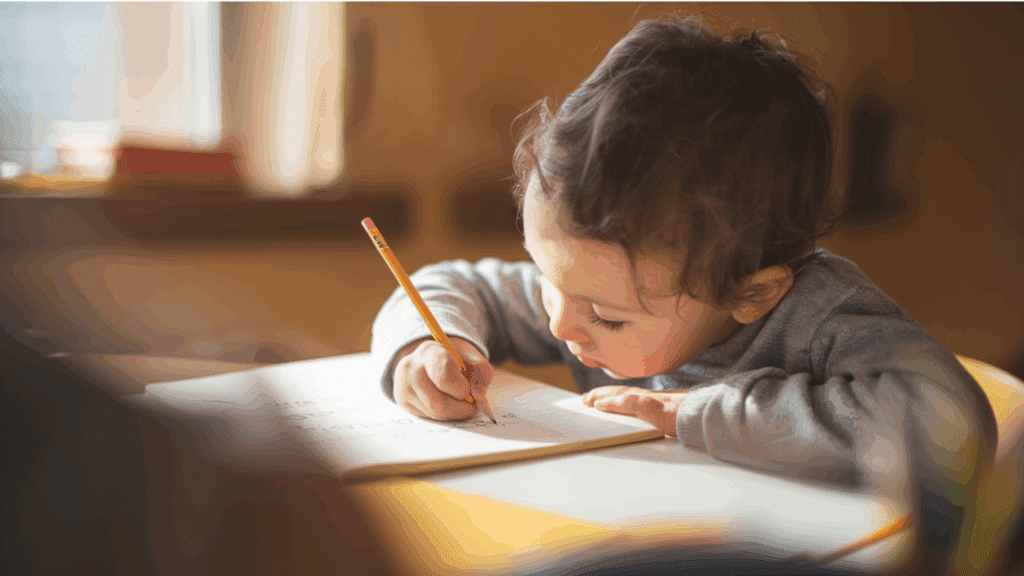Parents often worry when their two-year-old has speech problems. They notice other kids the same age talking more clearly.
When a child struggles to form sounds and words despite knowing what they want to say, it might be Childhood Apraxia of Speech.
This brain-based speech issue makes it hard for children to move their lips, jaw, and tongue to speak. The good news? With early help, kids can learn to talk more clearly.
This article explains what Childhood Apraxia of Speech looks like in two-year-olds, how experts spot it, and what parents can do to help.
It provides straightforward advice and information on treatment options that are most effective for young children.
What Is Childhood Apraxia of Speech? Understanding the Basics
Childhood Apraxia of Speech happens when a child’s brain has trouble telling their mouth parts how to move to make sounds and words. It’s not because their mouth muscles are weak. The problem is with the brain signals.
Kids with this condition know what they want to say. But when they try to say it, the words don’t come out right. It’s like their brain and mouth aren’t working as a team.
Some signs include:
- Making different mistakes each time they say the same word
- Having a hard time putting sounds together
- Using very few words for their age
- Getting frustrated when trying to talk
The good news? With help from speech experts and lots of practice, kids can get better at talking. Early help is super important!
Does your child struggle with talking? They might need to see a speech doctor who can help them learn to speak more clearly.
Why Early Intervention Matters for Your Child’s Speech Development

When your child’s brain is young, it’s like soft clay – easy to shape and change. This is why getting help early for speech problems works so well! Between the ages of 1-5, your child’s brain is super ready to learn language skills.
Early help for CAS can stop other problems too. Kids who can’t talk well might get frustrated and act out.
They might have trouble making friends or feel bad about themselves. Getting help now can stop these other problems before they start.
Plus, fixing speech issues early is often faster and easier than waiting. The longer you wait, the more your child might learn the wrong ways of talking that are hard to change later.
Early help also gives you, the parent, tools to help your child at home every day, not just during speech therapy sessions.
When to Seek Help: Key Indicators That It Might Be CAS
Here’s when to call a speech expert about possible CAS:
- Your 2-year-old only says a few words (fewer than 50) when other kids their age talk much more.
- Your child tries really hard to talk, but the words just don’t come out right. You can see them struggling.
- They mix up the order of sounds, like saying “aminal” instead of “animal” a lot.
- Your child seems to forget how to say words they could say before.
- They understand what you say, but can’t talk back well.
- Your little one gets very upset when trying to talk.
- They use the same few words or sounds for everything.
If you see these signs, talk to your doctor about a speech evaluation right away.
Don’t worry about childhood apraxia of speech 2 year old, or “waiting to see if they grow out of it.” With speech problems, sooner is always better than later!
Signs to Watch for: How to Identify CAS in Your 2-Year-Old

Worried your 2-year-old might have Childhood Apraxia of Speech? Here are some signs to look for:
Your little one might have CAS if they say the same word differently each time. One minute, “ball” sounds like “bah,” then “baw,” then something else.
Kids with CAS often use very few words for their age. Most 2-year-olds know about 50 words, but a child with CAS might use much less.
Watch how they move their mouth. Do they struggle to get their lips and tongue in the right spot? You might see them trying hard but getting stuck.
Simple sounds like “ma” or “ba” might be hard for them. And putting sounds together to make words? Even harder!
These kids often use body language more than words. They point, pull your hand, or make sounds instead of talking. Some children with CAS seem to understand everything you say but can’t talk back much.
If you see these signs, don’t wait. Talk to your doctor about seeing a speech expert who knows about CAS. Early help makes a big difference!
What to Do if You Suspect CAS in Your Toddler

If you think your toddler might have Childhood Apraxia of Speech (CAS), it’s important to take action quickly. Here’s a simple, step-by-step guide on what to do:
1. Notice the Signs
Start by looking for common signs of CAS in your toddler. These might include:
-
Limited babbling or difficulty making sounds.
-
Trouble saying certain words clearly.
-
Difficulty pronouncing simple words like “mom” or “dad.” If you notice these signs, it might be time to take the next steps.
2. Talk to Your Pediatrician
The first thing you should do is talk to your child’s pediatrician. They can help determine if there might be a problem and suggest the best next steps.
3. Get a Speech Evaluation
Your pediatrician might refer you to a speech-language pathologist (SLP). An SLP is a professional who can assess your child’s speech and determine if they have CAS.
4. Start Speech Therapy Early
If your child is diagnosed with CAS, starting speech therapy early is very important. Early treatment can help improve speech skills and make it easier for your child to communicate.
5. Stay Involved and Supportive
Support your child’s speech therapy by practicing at home. Please encourage them to use their words, be patient, and celebrate progress, even small progress.
By following these steps, you can give your toddler the best chance for improvement. Early action can make a huge difference in your child’s speech development.
Effective Treatment Options: Helping Your Child Overcome CAS

Effective treatment for Childhood Apraxia of Speech (CAS) focuses on speech therapy to help children improve sound production and communication skills.
Early intervention, consistent practice, and tailored therapy techniques are key to helping your child overcome CAS and communicate more clearly.
Speech Therapy with Motor Planning
Speech therapy is the main treatment for childhood apraxia of speech, but not just any approach will do.
The most effective therapy uses “motor planning,” where your child practices the same mouth movements over and over again. Think of it like learning to play piano – lots of repetition helps build muscle memory.
PROMPT Therapy
PROMPT therapy (Prompts for Restructuring Oral Muscular Phonetic Targets) works great for many kids with CAS.
The therapist might gently touch your child’s face to show them how to move their lips and tongue correctly.
Multi-Sensory Approaches
Multi-sensory approaches help, too. This means your child might watch in a mirror while making sounds, feel vibrations on their throat, or use hand movements that match speech patterns.
Alternative Communication Methods
Some children benefit from sign language or picture communication boards while they’re learning to speak. These tools reduce frustration and keep communication flowing.
Technology-Based Therapy
Many therapists use special apps and computer programs that make practice feel more like play. Kids often work harder when therapy seems like a game!
Home Support Strategies
At home, you’ll want to create a “language-rich environment” – talk about everything you’re doing, read lots of books, and give your child time to respond.
Patience is key – don’t rush them or finish their sentences.
Frequency and Consistency
Most importantly, therapy for CAS needs to be frequent and consistent. Your child might need sessions 3-5 times weekly at first. As they improve, this can gradually decrease.
Setting Realistic Expectations
Remember, every child progresses at their own pace. Some kids show improvement within weeks, while others take months to make noticeable gains.
The path may be long, but with the right support, most children with CAS can learn to communicate effectively.
The Bottom Line
The path ahead may seem challenging, but remember – you’re not alone in this path with childhood apraxia of speech 2 year old.
With early intervention and consistent therapy, most children with CAS make remarkable progress.
As you work with speech professionals, celebrate each small victory; every new sound, word, or phrase is a milestone worth recognizing.
The strategies we’ve discussed provide a roadmap, but your love, patience, and daily support remain the most powerful tools in your child’s development.
Trust your instincts, stay connected with professionals, and keep hope alive. Your 2-year-old has an incredible capacity for growth, and with the right help, clear communication is within reach.
















